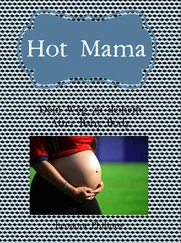Now it is her turn to make him feel secure: ‘Yes, I am here, Max, like the leaves you make rubbings with, like the bark covering the tree, like the trees of the earth. So time will pass, and my roots will become yours, entwined in one another.’
Ernst’s wife, Marie-Berthe Aurenche, protects artists from themselves, praying for them daily. If they don’t support her in return, if they go over to Leonora, she will forgive them. She takes refuge in the Church. At the moment of the elevation of the Host, the devout turn their heads and stare at her sobbing loudly beside the holy water stoup, raising her hands to the heavens.
Before going to sleep at night, Leonora runs over the lessons taught by her master. Madness brings the Surrealists to a higher level. Up until now Leonora’s world at home in England has been a conventional one, possibly insipid but well protected; in Paris she is walking along the edge of a precipice, hand in hand with the most daring man on Earth.
Any of the Old Masters would have opened their arms to Max. Rembrandt would have had him sit by his side, yet Ernst wants to cut all that up, turn it into collage, paint horns on his [Rembrandt’s] head, in order to travel on to the next dimension, break every rule. So much courage is required and Leonora follows him breathlessly, all her senses alerted. Music emanates from Max’s body, his voice is pure provocation, his movements grow like ivy intricating itself around her legs.
‘The strongest Surrealist image is one that presents the most heightened degree of arbitrariness, and which requires the most work to translate into a practical language.’
‘How can I paint a sense of smell? How can I make my paintings reek?’
‘Write it down.’
Leonora writes The Debutante in order to make a mockery of her presentation at Court. As well as being stinking and repellent, the hyena emits the sound of sarcastic, human laughter. She paints one with the eyes of a man and its breasts swollen with milk.
‘Why on earth would they admit a hyena into Buckingham Palace, Leonora?’
‘Because she kills the servant, then covers her hyena face with the woman’s skin for a mask, and carries on until her stench betrays her. Is it absolutely necessary for you to spend tonight at the Rue des Plantes with your wife?’
‘When you know her better, you will see that I am right to do so. She is too fragile, she cries the whole time, my friends all adore her, and many of them owe their careers to her. Jean Aurenche is her brother, and a virtuoso cinematographer. It is difficult to abandon her, I have to proceed very slowly with her.’
‘And how fragile do you think I am?’
‘Next to her, you are the Rock of Gibraltar.’
Ernst divides his days and nights between his studio on the Rue des Plantes and the Rue Jacob.
‘To Marie-Berthe, the end of love is like being disembowelled.’
‘And for you?’
‘I am Loplop, the superior bird, and I am obsessed with you, Leonora.’
‘What is Loplop all about?’
‘There’s a street poet known as Ferdinand Lop. I took his name and am the Vogelobre Loplop.’ Max wraps his arms around her. ‘I am a bird of prey, and I shall cover you with my feathers. Look, they are already sprouting.’
The picture that most shocks Leonora is that of the blind swimmer imprisoned behind vertical stripes made not of water but of steel. Or are they electric cables about to electrocute him? Is this the water that exerts such efforts to drown us, the harder we swim? There is no way to escape.
‘Who can save themselves? Are you going to throw yourself into the water with me?’
‘Once I saw a blind swimmer who never for a moment strayed from his lane.’
He explains that the painting is inspired by an illustration of electric currents in a science book, and that ‘automatically, we all blindly follow the current’.
Max’s Surrealist friends swiftly turn her into their idol. Nush Eluard takes her by the hand. ‘Look, I am the wife of a poet and I live every minute as if it were my last.’ Lee Miller assures her that, ‘In this life, everything is permitted if you know how to do it.’ Young and lovely, Leonora has turned her back on a vast fortune and an enviable position in society. She is the absolute incarnation of what Breton calls l’amour fou , breaking every rule; her actions belie the bourgeois conventions within which she was raised. Lee Miller agrees: ‘You have come so far already, don’t look back. Marie-Berthe, poor thing, is now a pillar of salt.’
Breton’s followers go to the very limits of their existence, the margins of society, they are seers. They appropriate a truth beyond reality, and call it Surrealism. They demand the liberation of men and women from all that prevents them from being themselves, in order to conform with a biological impulse to do whatever attracts them. Art confined by tradition is like a caged beast. To jail a creature is to deprive it of its grandeur. There is little space for fantasy within the cage of traditional art. However firmly established, inhibitions continue to maintain their force, no matter what liberties men accord themselves.
‘Paris loathes us,’ sighs Louis Aragon, still resentful of the censorship accorded to Le Con d’Irène in the creation of which he had to suck all of Apollinaire’s Eleven Thousand Pricks.
‘How wonderful,’ replies Breton. ‘He is a great man who justifies our existence. The bourgeoisie hate us because soon they will have to admit that we have an indefinable attraction within ourselves which excites them. In the gallery, the day before yesterday, a woman told me she had returned to view Ernst’s paintings a second time, because their colour and sense of movement affected her so profoundly.’
Among all the other exhibitors, it is Ernst’s spiritual dimension that stands out. He does what he likes and they admire him. Leonora is now his queen, his woman, his chosen one, and Marie-Berthe has been cast aside along the way: she is now nothing more than a victim. Surrealists do not practise fidelity.
Loplop, the superior bird, dazzles André Breton: ‘We are witnesses to the birth of a new art form.’ Insults justify Ernst’s way of life and his disdain for whoever fails to understand it. La Fessée , his painting of the Virgin slapping the infant Jesus’ bottom, offended his father. He paints with fury, liberating the burdens of childhood, buffeting traditions, taking it out on his family. When he was an adolescent visiting an art gallery in Cologne, he heard a young man offering an explanation of each painting in turn to an old man. Finally, the old man exclaimed indignantly: ‘What is all this about? I am now seventy-nine years old, and in my whole life dedicated to art I have never been so insulted.’ The youth became equally infuriated: ‘If you are really seventy-nine years old, you should have passed on to a better life by now.’
‘He would like to be your friend,’ Max intervened, speaking to the young man.
‘My name is Jean Arp,’ the young man introduced himself, holding out his hand. ‘Art has to be done away with as civilisation was by the War.’
‘How?’
‘With terror, with rage.’
‘Does Dadaism not have any room for compassion?’
‘Yes, but never for the past.’
Arp was the first to affirm that chance is the great creative stimulus. After struggling for months with a picture which he ended up tearing to bits and scattering to the four winds, he observed that the scraps of paper had fallen to the ground in just the shape that he had been seeking. So he stuck them together, recalling Mallarmé: ‘ Un coup de dés n’abolira jamais le hasard .’
He tells Max: ‘I created a woman’s buttocks from an ink blot.’
Читать дальше












